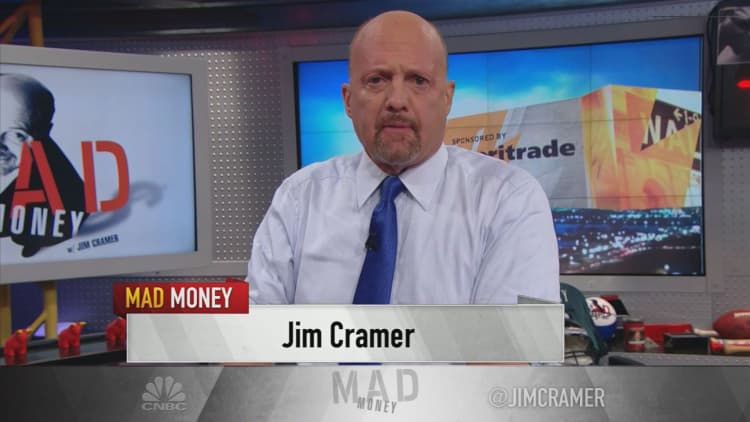In the wake of CVS Health announcing its plans to acquire insurer Aetna for roughly $69 billion, aiming to safeguard against challenges in retail and health care, Walgreens is taking a different approach to grow, starting at the front of its stores.
The Illinois-based drugstore chain announced Monday a rebranding strategy aimed at educating consumers on Walgreens' long-standing history, and stepping up efforts to target a younger demographic, particularly females.
Earlier this year, Walgreens said it would acquire roughly 1,900 stores from the Rite Aid nameplate, which are still being transferred over. Initially, Walgreens tried to outright buy the chain in 2015, and has since scaled back the number of stores in the purchasing agreement when met with regulatory scrutiny.
"This comes back to having [pharmacy] professional and experts within our stores," Walgreens Chief Marketing Officer Adam Holyk told CNBC about the Rite Aid deal. "Customers like knowing there's someone there to help them when they need it."
Even as internet giant Amazon threatens to enter the drug industry, having already held preliminary talks with generic drug makers about potentially entering the space, Walgreens is pouring money into its own store renovations and now a reinvented marketing campaign.
The company will add a new tagline to its logo: "Trusted Since 1901." Meantime, Walgreens is modernizing its business, showing off an updated mobile app, a strong loyalty program, and a website where shoppers can buy online and pick up in store.
"We are pharmacist led, in the services we provide, [but] we do view the retail aspect as important," Holyk said. "The question for Walgreens becomes: 'How can we translate our brand into the other products we sell today?'"
The company said its repositioning intends to reach two demographics of female shoppers — millennials and Gen X – to make Walgreens their "preferred pharmacy of choice."
Walgreens has already brought in more "appropriate" brands for younger shoppers, with a big emphasis on its beauty aisles, according to Holyk.
Walgreens has revamped the aisles where it sells CoverGirl and Maybelline cosmetics, among other brands, in more than 1,000 stores. Though the company didn't offer a timeline on future remodels, the process is ongoing.
Roughly 3,000 beauty specialists have been hired to offer product expertise, aiming to make its stores more of a go-to destination for makeup.
In acquiring European drugstore chain Alliance Boots roughly three years ago, Walgreens was able to bring more higher-end beauty labels to its shelves. Now, the company is mixing up even more of that merchandise today, where there's money to be made off millennials.

To be sure, Walgreens isn't the first to tap into a booming beauty market, and the company has already been met by competition from the likes of Ulta and Sephora, both of which are expanding across the U.S. at a rapid clip.
CVS and big-box retailer Target have made similar bets on their beauty aisles of late, putting increasingly popular Korean beauty (or "K-Beauty") brands on sale, and giving shelves a fresh coat of paint and eye-popping light fixtures.
Sales made at the so-called front of store are also much slimmer when compared to Walgreens' pharmaceutical business. U.S. retail (non-pharmacy) sales fell 1.8 percent in Walgreens' latest quarter, and account for roughly 30 percent of total revenue. Walgreens doesn't break out sales within its beauty department, though management did point out on a call with analysts and investors that the company's health and wellness and beauty categories have been its strongest.
Makeup aside, the company is also trying to learn what types of food and beverage options millennials want more of, according to Holyk.
Walgreens also is adding new items and packaging for its private-label brand, known as Nice! Bacon snack mix and organic sea salt popcorn are two additions. And it recently struck a deal with FedEx to bring mail drop off and pick up services to more than 7,500 of its stores nationwide, in another attempt to lure customers inside.
In a separate pilot test, Walgreens is collaborating with Med Express to open urgent care centers in a handful of stores spread across four states, which could lead to future expansion. The level of care offered there would be a step higher than a traditional walk-in clinic. Today, roughly 400 of Walgreens' 8,100 drugstores offer some sort of clinic services on site. For comparison, CVS boasts more than 1,100 walk-in clinics.
"In the areas that we are curating, we are trying to understand what consumers value," Holyk said. "It is all part of our brand transformation ... looking at the needs of our core customers, and we will continue to innovate."
Walgreens' stock ended the day Monday basically flat, on the heels of CVS revealing its plans to buy Aetna.
WATCH: Walgreens CEO says company could compete with Amazon in pharmacy space



